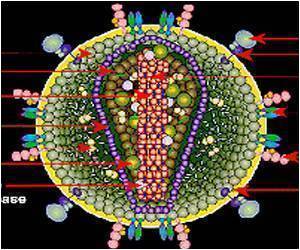
Salvinorin A, the most potent naturally occurring hallucinogen, is unusual in that it interacts with only one receptor in the human brain - the kappa opioid receptor (KOR).
Scientists know of four distinct types of opioid receptors, but until now the structure of the 'salvia receptor', and the details about how salvinorin A and other drugs interact with it, was a mystery.
In a research paper, scientists from the University of North Carolina at Chapel Hill, Scripps Research Foundation and two other institutions divulged the first-ever glance of the complete structure of the KOR.
The finding could accelerate the development of new drugs to treat addiction, depression, anxiety, chronic pain and many other conditions.
"Once we see the structure of the receptor, it becomes easier for us to develop drugs that target the receptor in ways that might be beneficial for medical therapy," said Bryan Roth, MD, PhD, the Michael Hooker Distinguished Professor of Pharmacology at UNC and one of the paper's authors.
Advertisement
Knowing KOR's structure offers insights about how salvia and other drugs work. The finding also could help scientists design medicines that either activate or block KOR to benefit patients.
Advertisement
In studies using animal models, JDTic has shown promise for treating cocaine and nicotine addiction, depression and anxiety.
The downside of JDTic and similar drugs targeting KOR is that they can exert their actions for weeks, whereas most prescribed medicines are cleared within 18-24 hours.
"Now that we have the [KOR] structure, it opens up the possibility for us to make drugs that have the same action as JDTic but have better pharmaceutical properties," said Roth.
The research also resolves longstanding scientific debates about how drugs bind to KOR. The study found that compared to other receptors, the binding site on KOR is enormous, allowing drugs to bind to it in more than one way.
In addition, Roth said the research could help scientists develop drugs that activate KOR in the body without affecting the brain, which could be useful for treating chronic pain, kidney problems and many other disorders.
The study has been published in the journal Nature.
Source-ANI









